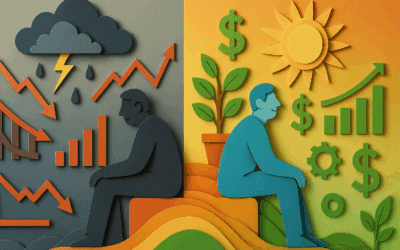“The best time to plant a tree is 20 years ago. The second best time is now” – Chinese Proverb.
I’m often asked by small business owners if they should be doing any advertising, either digital or print. “Yes,” is my typical short answer, “if you need to generate some immediate sales or fill your short-term pipeline and schedule.” But that would probably look more like a promotion rather than proper advertising.
Advertising vs. Promotion
Under the marketing umbrella, advertising and promotion serve similar but different needs when marketing your business. Both are tactics used to reach and influence the market. But while both are commonly considered “advertising,” they typically have different objectives and roles in the marketing mix. Understanding these objectives helps us to employ tactics more effectively.
Advertising is generally targeted at end-users to establish awareness, provide information for knowledge, and create brand loyalty. By focusing on end-users, advertising can indirectly influence distribution channels (where your customers buy things). Suppose advertising effectively generates interest in a product. In that case, shops (distribution channels) may be more interested in carrying the product. The media will also be more inclined to cover it (enter PR professionals). When this happens, advertising “pulls” the product through the distribution channels. For this reason, we tend to call advertising a “pull strategy.”
Sometimes advertising is used to enhance a company’s “goodwill,” so we feel better about a company. While not directly related to a specific product, these ads are useful in building an overall brand position and image. In its informational role, advertising can communicate or modify, a positioning and even promote new uses of a product (e.g., “Orange Juice isn’t just for breakfast anymore”.)
Promotion is so general that most marketing communications that are not strictly advertising (focusing on the end-user) are characterized as promotions. It’s better to just recognize that there are many types of promotions, including:
- Consumer promotions: aimed directly at end-users (e.g., special events, sampling, rebates, coupons, etc.).
- Distribution channel promotions: aimed at where you get the products/services (e.g., training programs, trade allowances, cooperative advertising, and the provision of point-of-purchase displays).
When considering whether to do advertising or consumer promotions, it is useful to consider that each tends to emphasize different benefits.
- Advertising tends to focus more on non-price benefits.
- Consumer promotions tend to be more price-oriented
Think about it this way; the Lincoln Car commercial you see on TV, with actor Matthew McConaughey waxing poetic about life… That is an advertisement in its pure form. It established awareness but didn’t tell you much in the way of features or benefits. It might even have made you feel something (providing an emotional connection to the brand).
Now that follow-up commercial, from your local Lincoln dealer, with the fast-talking announcer, shots of the car or SUV zooming down roads, and a display of features (EPA rating, gas mileage) and pricing ($0 down and $450 per month at signing with 2.9% APR financing)… That is a typical promotion.
Here is another example: The print ad with a hero photo of a glass of OJ and the brand package next to it, on a table in an Orange grove? That’s an Ad. The print ad from your local grocery store with a coupon for 50¢ off your next purchase… that’s a promotion.
So, What Is Marketing Again?
Think about marketing as the overall process responsible for identifying, anticipating, and satisfying customer needs profitably. You use different mediums (or marketing tactics) to communicate your position, value, differentiation, and offerings depending on your goals and strategies for sharing information with your audience (e.g., website, printed brochure and sales collateral, print ads, TV/radio commercials, blog, etc.).
In most cases, what you are communicating today is to help potential customers make the buy decision in the future when they need what you are offering.
I have the good fortune of working with many business owners to have taken to heart the old Chinese Proverb that says, “the best time to plant a tree is 20 years ago. The second best time is now”. After all, that’s at the heart of what brand marketing is—planting trees. The trees of brand marketing you plant today will guarantee business growth tomorrow.




